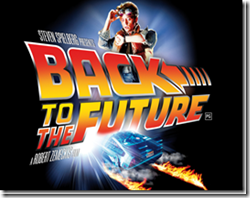Wouldn’t it be wonderful if someone could write an article describing our schools titled “Full Loyalty, No Negativity?”
I am a recent convert from a Windows PC to the Mac computing environment. That is a story for another day but what I want to share with you are some observations from my experiences in Apple stores and how those observations can be applied to move more of our students, parents, and employees closer to Full Loyalty with No Negativity.
If you have been in an Apple Store recently (if you haven’t I 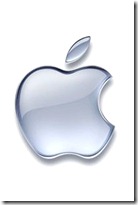 encourage you to do so as an observant leader--but you may want to leave your wallet at home!) you will discover that they are almost always filled with highly engaged customers, attentive staff, and great customer service. At least, that has been my experience every time I have visited an Apple store. Moreover, whenever Apple introduces a new product or an upgrade to an existing product line, customers will line up for hours and blocks, even camping out overnight, to be first in line to buy Apple products. Loyal Apple customers even have a nickname: “Apple Evangelists.” That speaks volumes! Wouldn’t it be wonderful if our parents were so enthusiastic about our schools that they would line up for hours and blocks and be tagged with the nickname “XYZ Christian school evangelists?”
encourage you to do so as an observant leader--but you may want to leave your wallet at home!) you will discover that they are almost always filled with highly engaged customers, attentive staff, and great customer service. At least, that has been my experience every time I have visited an Apple store. Moreover, whenever Apple introduces a new product or an upgrade to an existing product line, customers will line up for hours and blocks, even camping out overnight, to be first in line to buy Apple products. Loyal Apple customers even have a nickname: “Apple Evangelists.” That speaks volumes! Wouldn’t it be wonderful if our parents were so enthusiastic about our schools that they would line up for hours and blocks and be tagged with the nickname “XYZ Christian school evangelists?”
How do we get students, parents, and prospective parents to exhibit the same level of enthusiasm for enrolling their children in our schools and paying tuition as Apple customers do for Apple products? Without stretching the illustration too far, I think it would be wonderful if when parents and vendors visited our schools they sensed the same type of engagement, enthusiasm, and customer service that one experiences in an Apple store.
Consider some of the observations from a recent Wall Street Journal article; Secrets From Apple's Genius Bar: Full Loyalty, No Negativity. Below is a summary of the key observations of this article. Beneath each summary point I have added some possible applications for our schools and for our leadership.
• Apple goes to great lengths to train its employees at its popular retail stores, tightly managing what feels like a casual consumer experience. A look at confidential training manuals, a recording of a store meeting and interviews with more than a dozen current and former employees reveal some of Apple's store secrets. They include: intensive control of how employees interact with customers, scripted training for on-site tech support and consideration of every store detail down to the pre-loaded photos and music on demo devices.
APPLICATION: Our schools could benefit from systematic training in customer service. Such training would include all school personnel from administrators to groundskeepers. Everyone would understand that they are customer service agents with the mission of ensuring that students, parents, and visitors have wonderful experiences in the classroom and with every interaction with school staff.
Additionally, everyone should devote attention to quality throughout the school. Every detail of the school should reflect quality, attentiveness, and care. School grounds should be well kept, hallways free of clutter and book bags, walls adorned with well designed posters and student work, school communications should be warm, clear, and professional, the school’s website should be modern and easy to navigate, and all points of contact between students and parents should communicate that “we care.”
• With their airy interiors and attractive lighting, Apple's stores project a carefree and casual atmosphere. Yet Apple keeps a tight lid on how they operate. Employees are ordered to not discuss rumors about products, technicians are forbidden from prematurely acknowledging widespread glitches and anyone caught writing about the Cupertino, Calif., company on the Internet is fired, according to current and former employees.
APPLICATION: This is a tricky one. Although we would not want to go to the extent described above in how we deal with our employees, nevertheless, the focus on “airy Interiors and attractive lighting in a carefree and casual atmosphere” does have relevance for our schools.
Some of our schools and employees are too uptight. We can improve student achievement and their enjoyment of school–and thus parent satisfaction and enthusiasm for our schools–if our classrooms are characterized by an open, airy, more casual environment in which students are actively engaged in learning, who feel free to be themselves and to ask “politically incorrect questions,” and to make mistakes. In other words, although school is a serious business it does not have to feel like a strait jacket. Schools should be a place in which the emphasis is not on what is wrong or what not to do. Instead, we should champion what students can do and cast a compelling vision for the future.
• Apple is considered a pioneer in many aspects of customer service and store design. According to several employees and training manuals, sales associates are taught an unusual sales philosophy: not to sell, but rather to help customers solve problems. "Your job is to understand all of your customers' needs—some of which they may not even realize they have," one training manual says. To that end, employees receive no sales commissions and have no sales quotas.
"You were never trying to close a sale. It was about finding solutions for a customer and finding their pain points," said David Ambrose, 26 years old, who worked at an Apple store in Arlington, Va., until 2007.
APPLICATION: there are two very important principles contained in the description above. The first is the focus on innovation and the second is the focus on meeting needs. Our schools, and more importantly our students and our parents, will benefit immensely if we place an energetic and consistent emphasis on innovative teaching, innovative programs, innovative training, and innovative ways of serving our students and our parents.
Moreover, rather than focusing on our policies and procedures, we should spend more time focusing on good customer service for both students and parents in an effort to alleviate, insofar as possible, things that produce spiritual, emotional, social, or academic pain. We should focus on finding solutions for our students and parents and less on policies and rules.
 That is not to say that we compromise our standards, rather it is simply to say that if we devote far more attention to making our students’ and parents’ experiences with each person and situation as enjoyable as possible we will go a long way to increasing their satisfaction and deep loyalty to the school. In effect this is nothing more than applying the Golden Rule, “As you wish that others would do to you, do so to them.” (Luke 6:31, ESV) The result will be higher retention rates and the enthusiastic endorsement and recommendation of the school to others. Our parents will become our school “evangelists.”
That is not to say that we compromise our standards, rather it is simply to say that if we devote far more attention to making our students’ and parents’ experiences with each person and situation as enjoyable as possible we will go a long way to increasing their satisfaction and deep loyalty to the school. In effect this is nothing more than applying the Golden Rule, “As you wish that others would do to you, do so to them.” (Luke 6:31, ESV) The result will be higher retention rates and the enthusiastic endorsement and recommendation of the school to others. Our parents will become our school “evangelists.”
• Apple lays out its "steps of service" in the acronym APPLE: Approach customers with a personalized warm welcome Probe politely to understand all the customer's needs
Present a solution for the customer to take home today Listen for and resolve any issues or concerns, and End with a fond farewell and an invitation to return
 APPLICATION: What a wonderful model for our staff to follow! In fact, with a little tweaking this acronym can be readily applied to our schools. In many ways it reflects biblical servanthood, “as you wish that others would do to you, do so to them,” and “go the extra mile.” Here is the same acronym revised to reflect a Christian school environment.
APPLICATION: What a wonderful model for our staff to follow! In fact, with a little tweaking this acronym can be readily applied to our schools. In many ways it reflects biblical servanthood, “as you wish that others would do to you, do so to them,” and “go the extra mile.” Here is the same acronym revised to reflect a Christian school environment.
Approach every student at the beginning of the day and in the halls with a personalized warm welcome. Greet every parent and school visitor in like manner.
Probe politely to understand student needs--spiritual, emotional, and academic. Probe politely to understand parents’ needs.
Present solutions for students and parents to take home with them.
Listen for and resolve issues and concerns following James’ instruction, “be quick to hear and slow to speak.” (James 1:19)
End each class period and parent conference with a fond farewell, letting students know that you look forward to seeing them tomorrow and inviting parents to see you again if they continue to have concerns.
• Apple's control of the customer experience extends down to the minutest details. The store's confidential training manual tells in-store technicians exactly what to say to customers it describes as emotional: "Listen and limit your responses to simple reassurances that you are doing so. 'Uh-huh' 'I understand,' etc."
APPLICATION: Our first impulse when confronted with someone who is angry is to get angry and our second inclination is to seek to be understood and to defend our actions or those of the school. As a consequence, we often fail to comprehend the real nature of the problem being described by the student or the parent. We can also come across as not listening and defensive.
I have learned over the years that it is better to spend far more time listening than talking and I have also discovered that “less is more.” Over-explaining and providing more details than necessary often exasperates rather than solves problems. Sometimes we simply talk too much.
Moreover, it is often better to take time to thoroughly understand the nature of a problem than too quickly jumping to defend one’s actions or those of the school or to arrive at an immediate solution. It is wiser to listen and then to postpone a suggested solution until one has had time to gather all the facts and to pray for wisdom in seeking a proper response.
Accordingly, getting back to a student or a parent a day or so later may actually reflect better service than to attempt to solve a problem that has not been adequately considered or prayed about.
• Apple employees who are six minutes late in their shifts three times in six months may be let go.
APPLICATION: Do we hold our teachers to the same standards of punctuality and work that our teachers hold their students to? Do our teachers show up for faculty meetings or chapel services late? If so, what is the consequence? What is the consequence for a student who habitually shows up late for classes? In other words, do we model as administrators and teachers what we expect of our students?
Another way of looking at this is to ask “are our standards of service for each other, our students, and our parents as high as or lower than the standards that Apple requires of its employees who sell computer hardware and software?” Which is more important? If we are to “do everything as unto Christ,” would we show up late for one of his classes?
• Working for an Apple store can be a competitive process usually requiring at least two rounds of interviews. Applicants are questioned about their leadership and problem-solving skills, as well as their enthusiasm for Apple products, say several current and former Apple store employees. While most retailers have to seek out staff, retail experts say many Apple stores are flooded with applicants.
APPLICATION: How intensive is your recruiting and hiring process? Do you take prospective employees through multiple interviews accompanied by rigorous questions designed not only to ascertain the applicant’s commitment to Christ and to Christian education but his or her enthusiasm for teaching, love for students, creativity and innovation in teaching and assessing students, and willingness to learn? Or, are you too quick to settle fearing that you will not be able to hire someone to fill a need, in part, because salaries are so low? In the long run, taking shortcuts in hiring will ultimately harm students, negatively impact the school’s reputation and consequently negatively affect student retention, enrollments, and school finances.
• Once hired, employees are trained extensively. Recruits are drilled in classes that apply Apple's principles of customer service. Back on the sales floor, new hires must shadow more experienced colleagues and aren't allowed to interact with customers on their own until they're deemed ready. That can be a couple of weeks or even longer.
APPLICATION: How we use your mentoring program? Do you have seasoned teachers who have been given time to work in the classrooms periodically with new hires? Have you given veteran teachers the opportunity to formally and informally mentor new teachers? Or, is it more often the case that new teachers are placed in classrooms with little formal or informal mentoring beyond new staff orientation and standard in-service training programs? Do we had students to teachers before the teachers are ready?
• What hasn't changed is Mr. Jobs's interest in the stores. He has provided input on details down to the type of security cables used to keep products leashed to the tables, according to a person familiar with the matter. When the CEO grappled with a liver transplant two years ago, a person who visited him at the time said Mr. Jobs was poring over blueprints for future Apple stores.
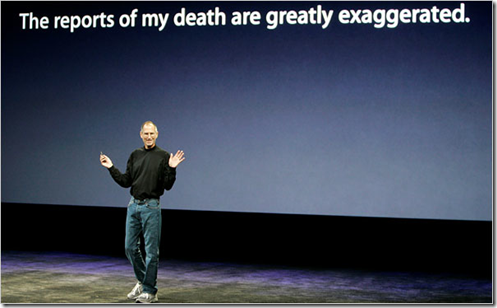 APPLICATION: The description above reflects three things on the part of Steve Jobs: 1. A love for Apple, 2. A focus on his mission rather than on himself, and 3. Attention to detail. Does our leadership consistently demonstrate the same characteristics as we serve our students and parents under the Lordship of Christ and for his glory?
APPLICATION: The description above reflects three things on the part of Steve Jobs: 1. A love for Apple, 2. A focus on his mission rather than on himself, and 3. Attention to detail. Does our leadership consistently demonstrate the same characteristics as we serve our students and parents under the Lordship of Christ and for his glory?
While we may never eliminate negativity, we can do much to foster deep loyalty to our schools and reduce the negativity that as fallen human beings we are so prone to. Although a computer company is not a school, nevertheless, we can learn a great deal from successful companies and leaders who place a focus on quality, training, and customer service.
As Christian school leaders we should be at least as devoted to these things as the CEO of Apple is to selling hardware and software, after all, we are the stewards of souls.





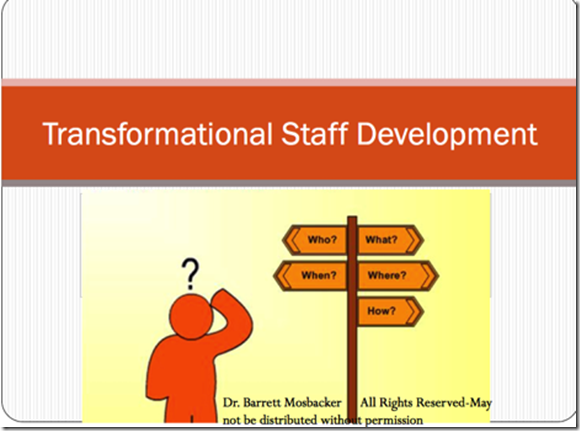
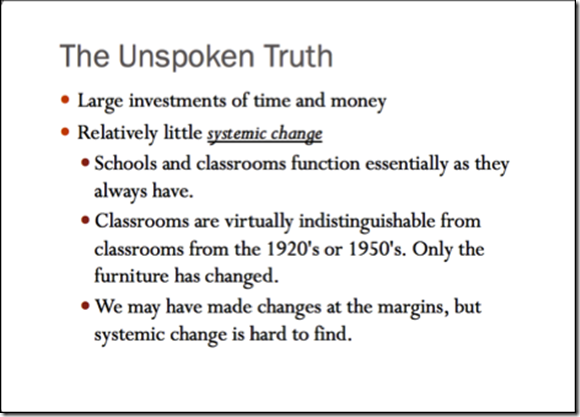
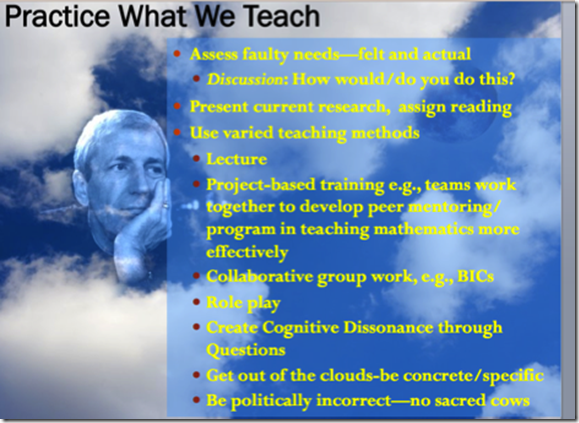

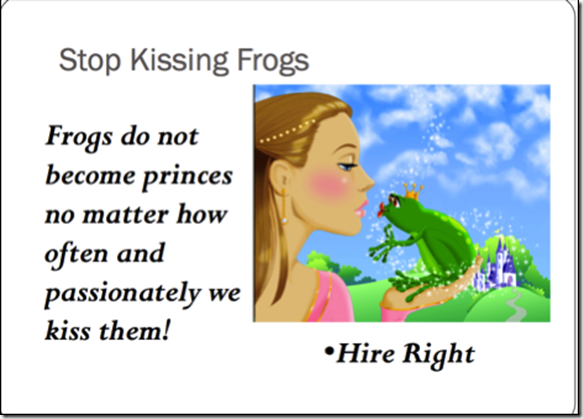



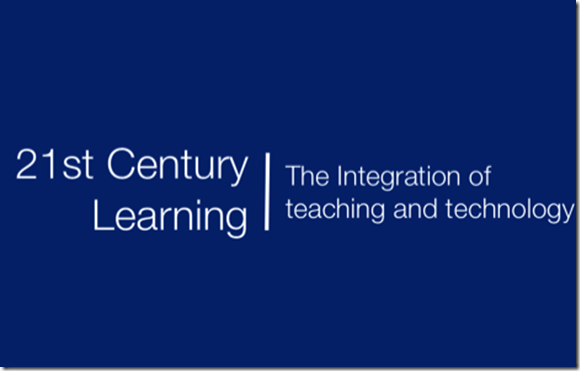
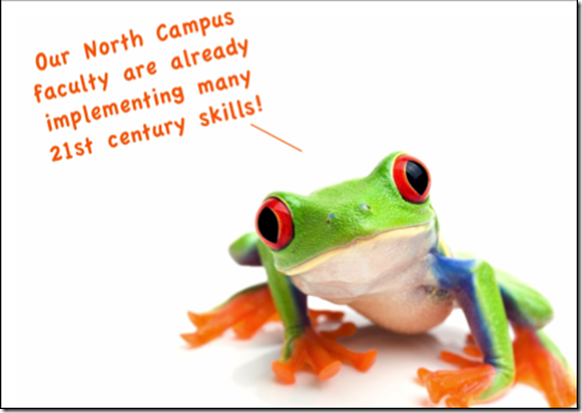


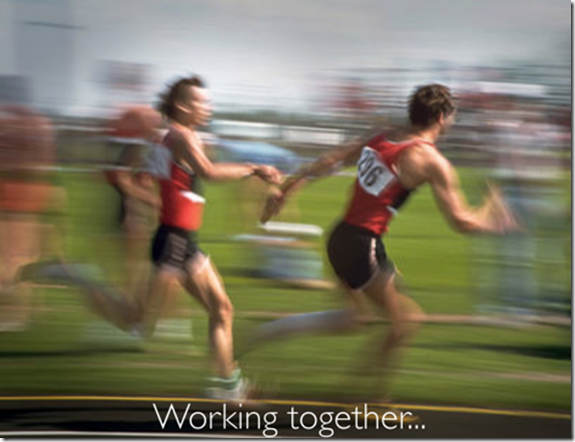

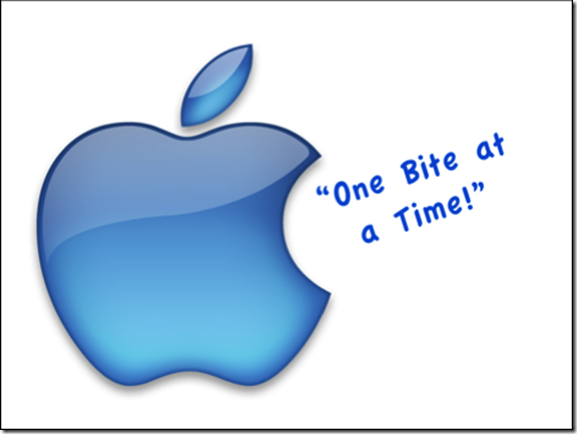
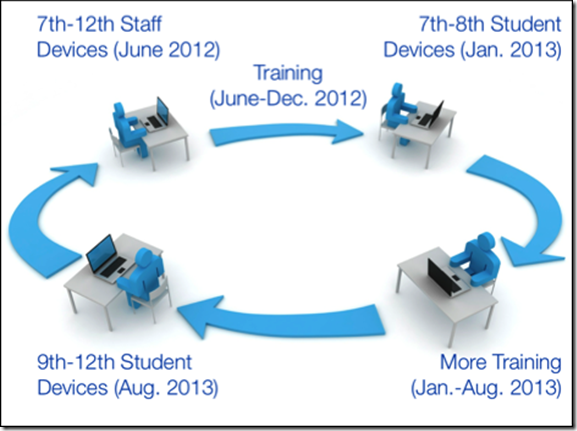
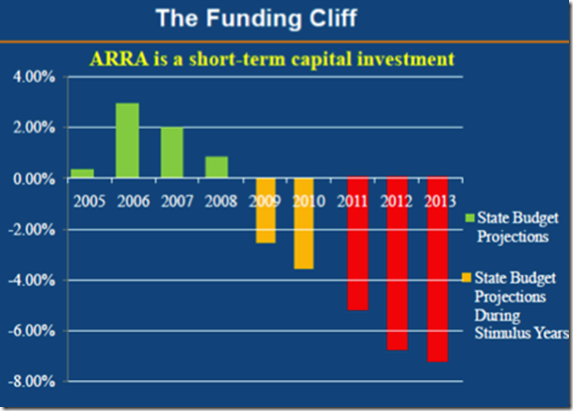
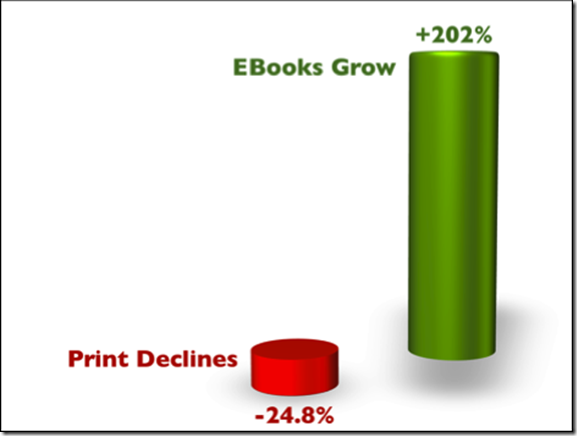








 While I was cleaning out my father’s nursing home room after his funeral the institution’s assistant director approached me with an expression of deepest sympathy on her face and her right hand extended.
While I was cleaning out my father’s nursing home room after his funeral the institution’s assistant director approached me with an expression of deepest sympathy on her face and her right hand extended. 